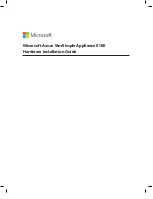
2-6
Cisco 10000 Series Router Software Configuration Guide
OL-2226-23
Chapter 2 Scalability and Performance
Scaling Enhancements in Cisco IOS Release 12.3(7)XI1
For more information on configuring L4R, see the “Redirecting Subscriber Traffic Using ISG Layer 4
Redirect
”
chapter in the
Cisco IOS Intelligent Service Gateway Configuration Guide, Release 12.2 SB
at the following URL:
http://www.cisco.com/en/US/products/ps6566/products_configuration_guide_chapter09186a0080630d
65.html#wp1048970
For more information on configuring PBHK, see the “Configuring ISG Port-Bundle Host Key” chapter
in the
Cisco IOS Intelligent Service Gateway Configuration Guide, Release 12.2 SB
at the following
URL:
http://www.cisco.com/en/US/products/ps6566/products_configuration_guide_chapter09186a0080630d
6c.html
Scaling Enhancements in Cisco IOS Release 12.3(7)XI1
Cisco IOS Release 12.3(7)XI1 provides increased limits with FIB scaling, policy-map scaling, and
queue scaling.
FIB Scaling
The FIB is a routing table that is used to look up the next hop route for the destination IP address and
the reverse path forwarding (RPF) route using the source IP address. The FIB Scaling feature implements
the following changes:
•
Up to 1 million routes in the global FIB table are supported without MPLS VPN configuration.
•
Total number of virtual routing and forwarding instances (VRFs) supported is 4095.
–
Up to 100 routes per VRF with 4095 VRFs configured.
–
Up to 70 routes per VRF with 4095 VRFs configured, plus 200,000 global BGP routes.
–
Up to 600 routes per VRF with 1000 or fewer VRFs configured.
Policy-Map Scaling
The Policy-Map Scaling feature increases the system-wide number of quality of service (QoS) policy
maps that you can configure. Depending on the complexity of your configuration, the
Cisco 10000 series router supports up to 4096 policy maps. In complex configurations the maximum
number of policy maps can be as small as a few hundred. Additionally, when you use percent-based
policing in a service policy, the system may convert a single customer-configured service to multiple
service policies (which count against the 4096 limit). The system uses one such service policy for each
different speed interface that uses a service policy with percent-based policing
Each
policy-map
command counts as one policy map and applying the same policy map on different
speed interfaces also counts as an extra policy map. The
policy-map
command syntax is unchanged. The
maximum number of classes that you can configure in a policy is 127.
















































